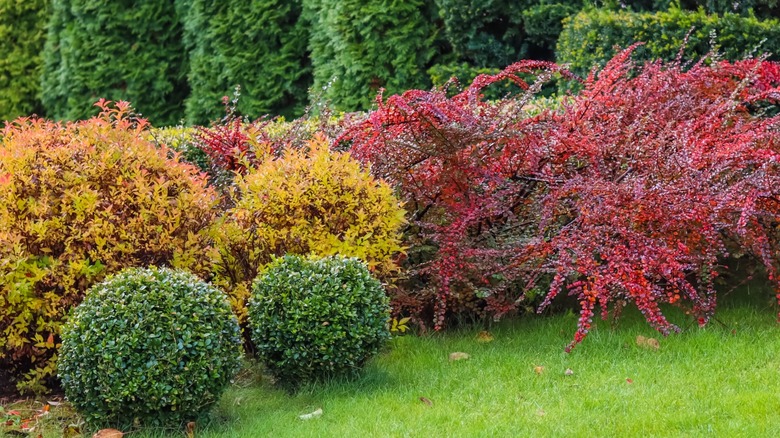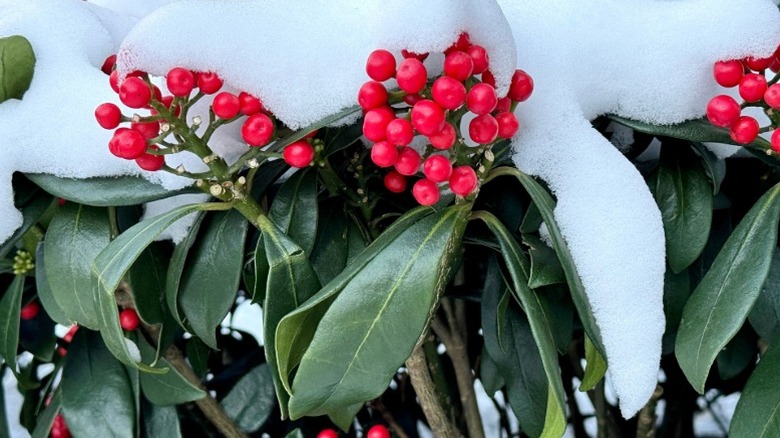The Beautiful Shrub That Adds A Pop Of Color To Your Yard During Winter
Winterberry holly (Ilex verticillata) is the shrub that keeps your garden colorful long after most plants have gone dormant. By late fall, its glossy green leaves drop, revealing branches dotted with clusters of bright red, orange, or golden berries that linger well into winter. Against snow or bare branches, these vibrant fruits pop, instantly brightening any landscape. For gardeners seeking a show-stopping winter feature, winterberry holly delivers striking color and interest with minimal effort.
Winterberry holly is more than meets the eye. Beneath its bright winter berries lies a powerhouse for wildlife, providing food and shelter when other resources are scarce. Over 48 species of birds rely on its berries, while small mammals turn to them when other foods run low. The perennial shrub is also a larval host plant for Henry's Elfin butterfly, and attracts busy bees. Planting winterberry in clusters enhances cover and creates a winter haven for pollinators and songbirds, making your yard a lively, thriving ecosystem even in the cold months.
This Eastern North American native shines in any landscape, whether as a hedge, border, or foundation plant. Dwarf cultivars fit beautifully in smaller yards or containers, making winterberry holly surprisingly versatile. Since it grows slowly between 3 and 15 feet tall and up to 12 feet wide, it's easy to plan around the shrub's mature size without crowding other plants. And unlike American holly, which can shoot up to 60 feet, winterberry holly is a great tree alternative that won't outgrow a small yard.
Caring for your winterberry holly in winter
To successfully grow and care for your holly bush, start with the right planting conditions. Winterberry holly is an adaptable shrub that thrives in full sun to partial shade and prefers moist, acidic, loamy soil, though it can tolerate clay and sandy soils. Avoid alkaline soil, which can cause yellowing leaves and weak growth. While winterberry holly can survive occasional drought, consistent moisture supports healthy foliage and abundant berries. Good air circulation also helps prevent leaf spots and powdery mildew. This shrub grows best in USDA hardiness zones 3 through 9.
Because winterberry is dioecious, you need both male and female plants for fruit. Female plants produce the bright red, orange, or yellow berries — but only when pollinated by a male. One male can pollinate up to 20 females if planted within 40 feet. Farther spacing works for four to five females. Choose male and female cultivars with overlapping bloom periods. The right combination ensures a vibrant, long-lasting berry display throughout winter.
Pruning and placement also make all the difference. Prune in early spring before growth starts, removing up to one-third of the oldest branches to keep the shrub vigorous. For maximum impact, plant in groups or sweeping masses; its dense foliage and brilliant berries create a dramatic winter backdrop. Just keep in mind: the berries and leaves are toxic to humans and pets, so admire them but don't snack. That said, the bright berries make winterberry holly a striking addition to any garden, and as a bonus, your yard becomes a bird-friendly winter habitat.

